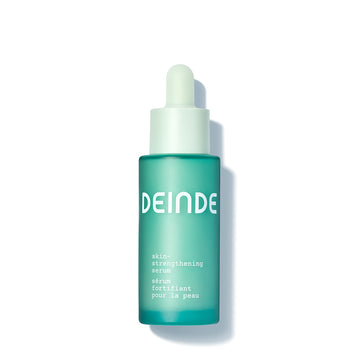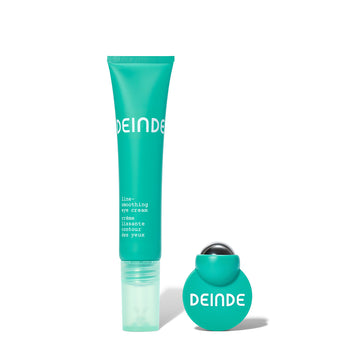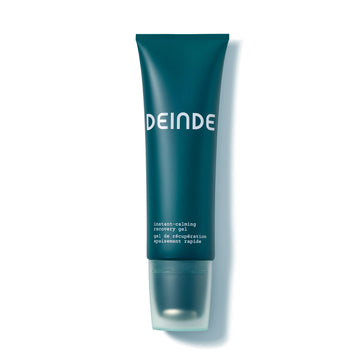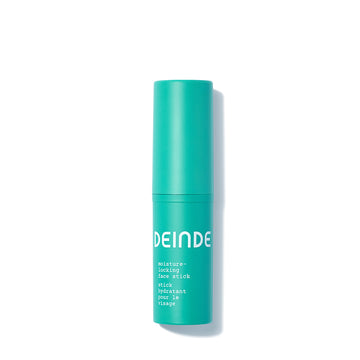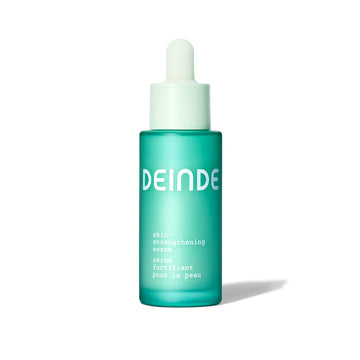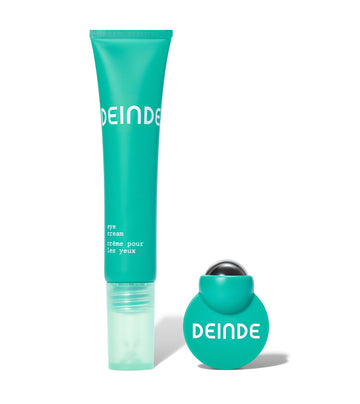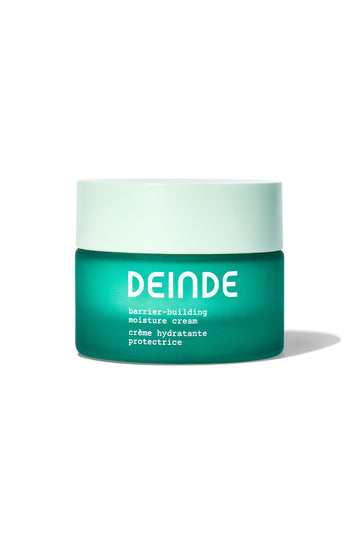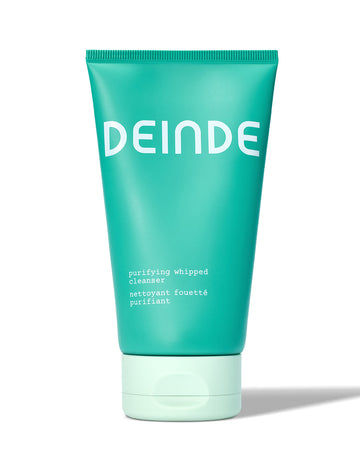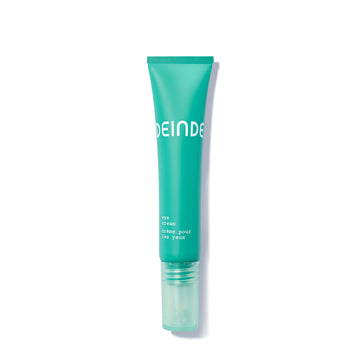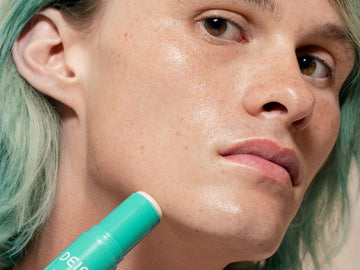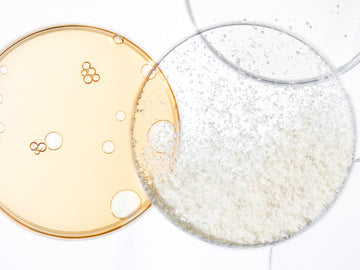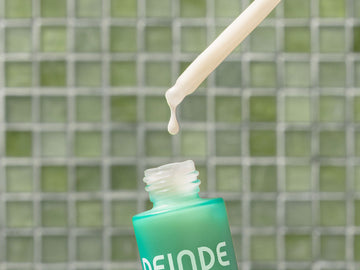
Face Serum Guide: When and How To Apply
There are a few skin care essentials that even those of us with the most minimal of skin routines recognize: these are cleansers, lotions, exfoliators, etc. While we’ve become used to referencing or reaching for these products without a second thought, it’s not often that we take the time to truly understand what’s happening behind the scenes.
DEINDE is rooted in the ideology that the small investments we make today create a better tomorrow — this idea directly applies to choosing skin products from an informed place. We believe there’s immense benefit to understanding how our skin’s well-being is altered by what we apply to it.
What is a Face Serum?
Serums earn their rightful place in a skin care routine because of their high concentration of cosmetic active ingredients. As most facial serums target specific skin concerns and skin needs — like dark spots, fine lines, or hydration — there are thousands of formulation variations for consumers to choose from.
As a reminder, a cosmetic active ingredient targets improvements in visible skin concerns. Cosmetic actives are often only effective at specific concentrations, which is why you see popular cosmetic actives like niacinamide boasting levels between 2-6%. Lower concentrations than the recommended active level tend not to be impactful, while excessive levels can irritate skin.
Serums are known and loved because of their exceptional hydration. Many serums are water-based, sometimes including hyaluronic acid or aloe juice. Weightless and formulated for fast absorption, serums rarely leave a greasy or heavy residue. This also makes serums ideal when layering with other skin care products.
It's worth noting that serums are designed to be concentrated. It's rare to find a serum that contains occlusive (oily) ingredients — these inputs are found in products like moisturizers that create a somewhat impermeable barrier on the skin's surface. Emollients — moisturizing ingredients that help soften and smooth the skin (like jojoba seed oil and squalane) — are more commonly used in serums as they help improve texture and hydration. Because serums lack occlusive ingredients, formulations are able to directly deliver cosmetic active ingredients to deep layers of the skin.
Language has power. In the beauty realm, words that refer to ingredient quality are often used interchangeably, even when they have significantly different meanings and connotations. To make informed choices — and to ensure that language is being used correctly — we’ve dug into the meaning of each of these common, yet sometimes misunderstood terms.
How do serums work?
Serum formulations lean on a variety of levers to ensure that products are actually impactful. A few of those key methods include:
→ Molecular Size and Bioavailability
Bioavailability refers to how many active ingredients can actually enter the skin and prompt a response. Serums are primarily formulated with bioavailability in mind through the use of small active molecules that optimize skin delivery. These minuscule actives increase the likelihood that ingredients pass through the stratum corneum (skin’s protective barrier) and reach deeper layers of the skin.
→ Advanced Delivery System
Some serums look to advanced delivery systems like nanoparticles and liposomes to ensure cosmetic active ingredients have a controlled, steady release. The goal here is for extended skin contact and for cosmetic active ingredients to reach their ideal destination while remaining just as potent.
Nanoparticles are typically less than 100 nanometers in diameter — this method physically encapsulates cosmetic active ingredients to transport compounds into the deepest layers of skin. Nanoparticles can be engineered to address skin concerns like anti-aging, hydration, blemish control, etc.
Liposomes more closely mimic the skin’s lipid bilayers. When cosmetic actives are embedded in liposomes, they merge into the skin's lipid layers, allowing for direct penetrating and efficient cosmetic active ingredient delivery.
→ Complementary Ingredients
Serums often combine cosmetic active ingredients that work in synergy to enhance the overall effectiveness of the product. For instance, pairing vitamin C with vitamin E can provide superior antioxidant protection, as these two ingredients complement each other to support skin cell health during exposure to free radicals, combat dullness, and contribute to healthier skin.
→ Peptide Deliverability
Peptides are small chains of amino acids that assist with targeted delivery of ingredients. We’re seeing them actively used in serum formulations to provide nourishing benefits and address common issues like collagen and elastin loss.
→ pH Optimization
The pH level — a scale that measures acidity or alkalinity — ensures the effectiveness of costmic active ingredients. These levels range based on targeted issues and cosmetic actives used.
Common Serum Types — and How to Determine What's Best for Your Skin
→ Dry Skin
To relieve the tightness and flakiness associated with dry skin, reach for exceptionally hydrating serums, like a hyaluronic acid serum. Serums that contain humectants, ingredients that attract and retain moisture, like amino acids, will bring much-needed hydration into the skin and prevent water loss.
→ Oily Skin
The key to targeting this skin type is to prevent and reduce unnecessary oil production while maintaining microbiome balance. Look for serums with soothing ingredients to ease irritation and bring skin back to a steady state. You’ll want a serum that helps maintain balanced sebum production without stripping skin of necessary natural oils (which can cause dryness and further overproduction of oil to compensate).
→ Hyperpigmentation
If you’re facing dark spots and a frustrating uneven skin tone, brightening serums, like a vitamin C serum, are for you. Formulations that include vitamin C are recognized for their ability to reduce the appearance of dark spots. Exfoliating and soothing serums help get rid of dead skin cells, support cell turnover, and take skin out of a fight-or-flight state.
→ Wrinkles
Target skin cell turnover and collagen production. Whether your skin is responding to excessive skin damage or exists in a state of inflammaging — chronic, low-grade inflammation — your body needs support maintaining proper cellular production. Antioxidant-rich formulations help support your skin cells during exposure to free-radicals and soften the look of wrinkles for a firmer and healthier appearance.
How to Layer Serums
Best practices for layering skincare start with a clean, cleansed face free of dirt, makeup, and impurities, so it’s always best to wash your face as your very first step. Products with cosmetic active ingredients work best when they are able to penetrate the skin uninterrupted. Here’s DEINDE’s no-nonsense minimal layering routine — beyond the below, feel free to add in any necessary products, whether that is an exfoliator, facial oils, eye cream, sunscreens, etc. The idea is to always go from lightweight to heavy.
Cleanse to set the stage → Apply Serum → Moisturizer to lock in hydration and create a protective barrier
Note that applying serums at specific times during the day maximizes their impact.
Morning
Prepare for the day ahead with serums rich in antioxidants to shield your skin if it is exposed to UV radiation and pollution. Apply face serums rich in vitamin C, for example, which can maintain your skin cell health during exposure to free radicals and oxidative stress — which may be elevated during the daytime. Layer with SPF, always.
Evening
In the evening, your skin steps into a natural repair and regeneration state — this is an ideal time to use face serums with more collagen-supporting and cell-turnover-supporting ingredients like peptides.
Studies cited:
- Skin anti-aging strategies | PMC
- Aging Skin and Anti-Aging Strategies | Exploratory Research and Hypothesis in Medicine
- Benefits of topical hyaluronic acid for skin quality and signs of aging: From literature review to clinical evidence | PMC
- Role of topical peptides in preventing or treating aged skin | NCBI
- Vitamin C in dermatology | PMC
